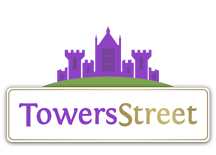Some travel companies are putting heavy pressure on customers to accept credit notes, saying they (the credit notes) are abta covered.
They are not abta covered.
That, in particular, is a con.
Lots of companies are doing it, but it isnt right, or legal.
Wrong. If you read the ATOL and ABTA website it says:
Thousands of customers have already amended and rebooked their holiday or have received a Refund Credit Note from their travel provider. If your original holiday was covered by a financial protection scheme (e.g. ATOL or ABTA), your Refund Credit Note is financially protected by ATOL or ABTA (whichever covered your original booking) in the event your travel business fails. It is important that your Refund Credit Note includes certain things, please see more detail on this there (see What is a Refund Credit Note above). If you are uncertain about accepting a Refund Credit Note, then talk to your travel provider about your options.
Also, accepting a credit note also means later on you can still get a refund
A Refund Credit Note preserves your right to a cash refund, which can be redeemed at the latest at the expiry date of the note.
The only thing that isnt covered would be a "holiday voucher" but as I understand companies are giving credit notes, so you are covered.
https://www.abta.com/news/coronavirus-outbreak

